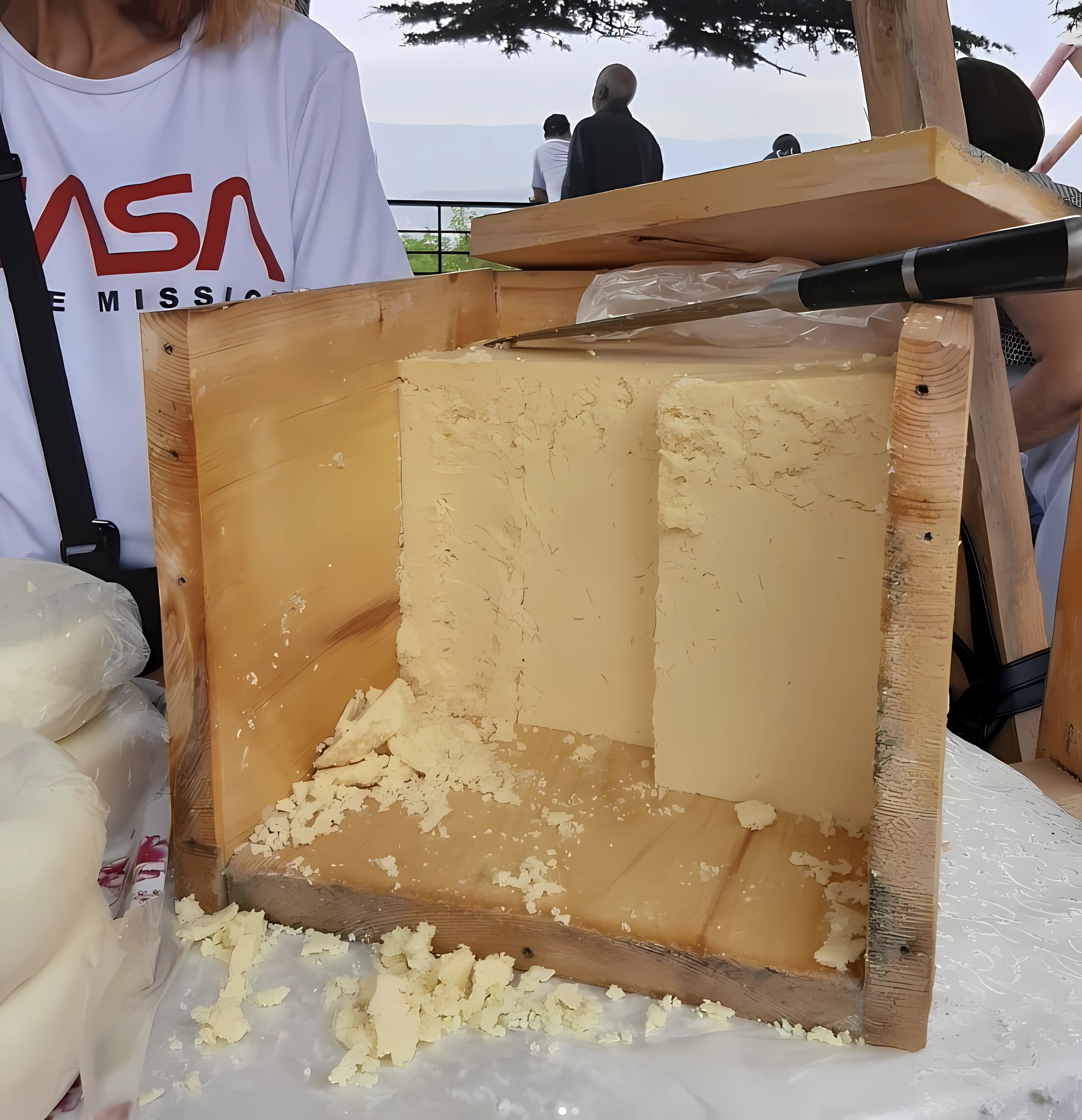6 Georgian Cheeses You Need To Know
Georgia photo credit Denis Arslanbekov
Ask anyone who’s visited Georgia, and they’ll tell you it’s a place unlike any other. With its ancient winegrowing culture, varied terrain, and unique cuisine, Georgia evokes a soulful feeling of sharing homemade dishes family-style around a dinner table. While Georgia is known for its love of bread products, cheese ranks high among the nation’s top foods. Stringy, stretchy, sour, and melty, there is a cheese for every preference in Georgian cuisine. Cheese culture is deeply woven into the thread of Georgian culture, so while there’s a seemingly endless number of Georgian cheeses worth trying, here are 6 Georgian cheeses you should know to get you started:
Sulguni
Sulguni
Although Georgian culture is uniquely its own, the country’s most prominent cheese is a cow’s milk cheese called Sulguni, which can be most closely related to mozzarella. This semi-firm, salty cheese is quite sour but its flavor is masked by the fresh herbs and tomatoes it’s often served with. Hailing from the Samegrelo and Svaneti regions of the Western part of the country, it’s made from cow or buffalo milk. Georgia’s decadent cheese bread khachapuri takes on different shapes depending on the region, formed either as boats or as leavened flatbreads, but almost all use a Sulguni cheese filling. There’s something irresistible about these breads and Sulguni is one of the reasons. Sulguni cheese is also sold smoked and is just as delicious as the original.
Guda
Guda
Georgian Guda, not to be confused with Gouda of the Netherlands, is named for its distinct production vessel. This sheep’s milk cheese is cured inside a sheepskin pouch. It’s produced in the mountainous Tusheti region of eastern Georgia, where the process has been refined by generations of locals from the remote region. The curds are strained and then placed in the Guda bag to age for at least 60 days. Fans of bold cheeses will love Georgian Guda, with its salty, pungent characteristics. The final product, riddled with holes, is often slightly yellow. If you’re lucky enough to get your hands on some Guda, pair it with an equally bold skin-contact wine from Georgia to see just how special this cheese truly is.
Imeretian
Imeretian
The Western Georgian region of Imereti is known for its distinct cuisine. Compared to other parts of the country, Imereti cuisine makes heavy use of walnuts, pickled vegetables, and a cornbread called Mchadi. Imereti cheese, called Imeruli or Imretian cheese, is perhaps the region’s most famous dairy export. Much like the mozzarella-adjacent Sulguni, this cheese is used to enhance Georgia’s famous khachapuri, imparting a rich flavor and that beloved gooey, stringy texture. This raw cow’s milk cheese is semi-soft and compared to some of Georgia’s other cheeses is rather mild, although salty.
Tenili
Tenili
String cheese is often thought of as a kid-friendly snack, but in Georgia, a stringed delicacy called Tenili is anything but child’s play. Curds of cow’s or sheep’s milk are boiled down until tender. The cheesemaker then pulls out tendrils, giving this cheese its signature appearance. Once shaped, the cheese is soaked in a brine for anywhere up to a few hours before the tendrils are hung on a pole. This allows the cheese to dry completely, which sets the stage for the next step when the tendrils are soaked in cream and stuffed into large pots. After a few rounds of draining the cheese every few days, the Tenili is finally ready to enjoy.
Dambalkhacho
Dambalkhacho
With their striking flavors and noticeable appearance, moldy cheeses are some of the most distinct and yummy in the world. One of Georgia’s takes on a pungent, moldy cheese is Dambalkhacho. It’s an unmistakably intense cheese that’s made from a homemade buttermilk cottage cheese that’s salted and rolled into balls and allowed to dry in wooden baskets that are positioned over a fire. They’re then sealed in a clay pot, which is stored in a dark, cool environment like a basement for at least one month. And when the cheese is ready, the moldy outer shell is removed, revealing a golden, silky interior. Georgians often eat this cheese on its own or cook it down with fat into a cheese sauce.
narchvi photo credit @natakxa
Narchvi
This last cheese, one of the rarest and at risk of dying off, is Narchvi, a cow’s milk cheese that’s aged for up to a year in a special wooden box. The cheesemaker first kneads the base cheese and then packs it into the box. A sprinkle of salt between each layer pulls water out of the cheese, allowing it to reach a sufficient moisture level. The cheesemaker then places a pile of stones, for example, on the box and allows it to sit for several months. The liquid drains out of the cheese, resulting in a salty, nutty final product. This cheese is a specialty of the western region Svaneti and the locals often enjoy it on its own as part of an appetizer platter or baked into khachapuri.







